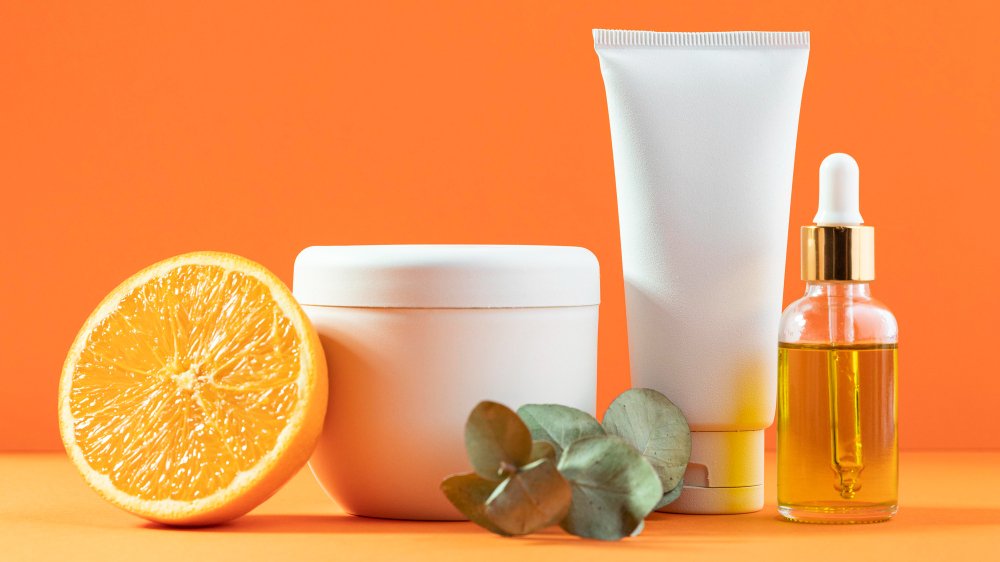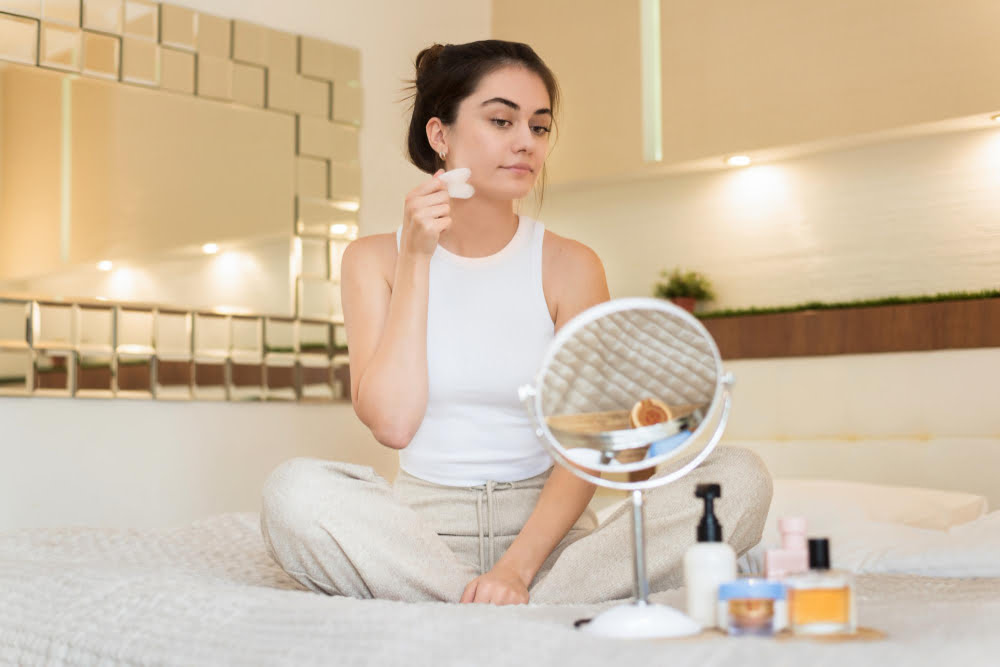Creating an effective acne treatment regimen is crucial for anyone struggling with this common skin condition. With a myriad of products and advice available, it can be overwhelming to figure out where to start. This article breaks down the process into five essential steps, ensuring that you can build a personalized and effective acne-fighting routine. From understanding your unique skin type to making lifestyle changes and monitoring your skin’s response, these guidelines will help you navigate the journey towards clearer skin.
Key Takeaways
- Identifying your skin type and understanding the specific acne condition you have are foundational steps in creating an effective treatment regimen.
- Choosing the right acne treatment products is critical, and should be based on the ingredients’ effectiveness for your type of acne, as well as whether they are available over-the-counter or by prescription.
- A daily skincare routine should be carefully designed to include cleansing, exfoliating, moisturizing, sun protection, and the correct incorporation of acne treatments.
- Lifestyle factors such as diet, stress, and exercise play a significant role in the health of your skin and the severity of your acne; adjusting these can improve treatment outcomes.
- Regularly monitoring your skin’s progress with a skin diary and being open to adjusting your regimen or seeking professional advice can lead to better long-term results.
Understanding Your Skin Type and Acne Condition
Identifying Your Skin Type
Before diving into acne treatments, it’s crucial to identify your skin type as it significantly influences which products will be most effective for you. Generally, skin types are categorized as oily, normal, combination, or dry. Each type has unique characteristics and requires a different approach to care.
- Oily skin often appears shiny, has enlarged pores, and is prone to acne breakouts.
- Normal skin is well-balanced, not too oily or dry, and has few imperfections.
- Combination skin features a mix of oily areas, typically on the forehead, nose, and chin (the T-zone), and dry to normal areas on the cheeks.
- Dry skin can feel tight and may exhibit flaking or rough patches.
Tip: Pay close attention to how your skin feels after cleansing. If it feels tight, your cleanser may be too harsh for your skin type. Conversely, if your skin looks or feels greasy shortly after cleansing, you might need a product that offers more oil control.
Recognizing Different Types of Acne
Acne comes in various forms, each with its own set of characteristics and treatment approaches. Understanding the type of acne you’re dealing with is crucial for selecting the right treatment regimen.
- Comedonal acne: This type typically appears as blackheads and whiteheads. It’s caused by clogged hair follicles and is often treated with topical retinoids or salicylic acid.
- Inflammatory acne: Presents as red, swollen pimples. It can range from moderate to severe and may require a combination of topical and oral treatments.
- Cystic acne: The most severe form, characterized by deep, painful cysts under the skin. It often necessitates prescription medication and should be managed by a dermatologist.
Tip: Always patch test new treatments on a small area of skin to check for adverse reactions before applying them to your entire face.
By recognizing the type of acne you have, you can tailor your skincare routine to effectively combat it. Remember that what works for one person may not work for another, so be patient and willing to adjust your approach as needed.
The Importance of Knowing Your Acne Triggers
Understanding your acne triggers is a crucial step in managing breakouts effectively. Each individual’s skin reacts differently to various stimuli, which can lead to the aggravation of acne. By identifying what specifically causes your skin to flare up, you can tailor your skincare regimen to better prevent and treat these occurrences.
Common triggers include dietary choices, hormonal fluctuations, stress levels, and certain cosmetic products. Keeping track of these factors can help you pinpoint patterns and make informed decisions about your skincare. Here’s a simple list to start monitoring potential acne triggers:
- Diet: Dairy, high-glycemic foods, and certain nuts
- Hormones: Menstrual cycle, pregnancy, or medication
- Stress: High stress can increase cortisol levels, affecting skin health
- Cosmetics: Comedogenic makeup or skin care products
Tip: Pay close attention to how your skin reacts after exposure to suspected triggers and adjust your routine accordingly. Remember, what irritates one person’s skin may not affect another’s, so personalized attention is key.
By being proactive and observant, you can minimize the impact of these triggers on your skin. This knowledge not only helps in selecting the right products but also in making lifestyle changes that contribute to the overall health of your skin.
Selecting the Right Acne Treatment Products

Ingredients to Look for in Acne Treatments
When selecting acne treatment products, it’s crucial to understand which ingredients are effective against acne. Look for products containing salicylic acid, a beta hydroxy acid that helps to exfoliate the skin and unclog pores. Another key ingredient is benzoyl peroxide, which kills bacteria and helps to reduce inflammation.
Retinoids, derivatives of vitamin A, are also beneficial as they promote cell turnover and prevent the plugging of hair follicles. For those with sensitive skin, ingredients like niacinamide can offer anti-inflammatory benefits without causing irritation.
Here’s a quick reference list of acne-fighting ingredients:
- Salicylic Acid: Exfoliates and unclogs pores
- Benzoyl Peroxide: Kills bacteria and reduces inflammation
- Retinoids: Promote cell turnover
- Niacinamide: Provides anti-inflammatory benefits
Tip: Always start with lower concentrations of active ingredients to assess your skin’s tolerance and minimize potential irritation.
Over-the-Counter vs. Prescription Options
When it comes to acne treatments, the decision between over-the-counter (OTC) options and prescription medications is crucial. OTC products are readily available and can be effective for mild to moderate acne. They often contain ingredients like benzoyl peroxide, salicylic acid, and alpha hydroxy acids.
Prescription treatments, on the other hand, may be necessary for more severe cases or when OTC products fail to deliver results. These medications, such as retinoids, antibiotics, or hormonal treatments, are prescribed by a dermatologist and tailored to your specific skin needs.
Tip: Always start with the lowest concentration of active ingredients to see how your skin reacts before moving on to stronger formulations.
It’s essential to understand the pros and cons of each option:
- OTC Products:
- Accessible without a prescription
- Generally more affordable
- Lower concentrations of active ingredients
- Prescription Medications:
- Higher potency for stubborn or severe acne
- Professional guidance and monitoring
- Potential for more significant side effects
Remember, what works for one person might not work for another. It’s important to monitor your skin’s response and consult with a healthcare professional if you’re considering prescription options.
Product Recommendations for Various Acne Types
Selecting the right acne treatment products is crucial for managing different types of acne effectively. Here’s a guide to help you choose products tailored to your specific acne condition:
- Mild Acne: For occasional pimples or blackheads, look for products containing salicylic acid or benzoyl peroxide. These ingredients help to unclog pores and reduce inflammation.
- Moderate Acne: If you’re dealing with more persistent acne, consider products with a combination of active ingredients. A regimen including both exfoliants and antimicrobials can be beneficial.
- Severe Acne: In cases of severe or cystic acne, it’s essential to consult a dermatologist. Prescription treatments such as retinoids or oral medications may be necessary.
Tip: Always patch test a new product on a small area of skin before applying it to your entire face. This can help you avoid adverse reactions.
Remember that what works for one person may not work for another. It’s important to monitor your skin’s response to new treatments and be willing to adjust your regimen as needed.
Designing Your Daily Skincare Routine

Cleansing and Exfoliating Best Practices
Cleansing is the cornerstone of any acne treatment regimen, as it removes excess oil, dirt, and impurities that can clog pores. It’s essential to use a gentle, non-abrasive cleanser that matches your skin type. Over-cleansing can strip the skin of its natural oils, leading to increased oil production and potential breakouts.
Exfoliation is critical for removing dead skin cells that can contribute to acne. However, it’s important to exfoliate with care. Over-exfoliating can irritate the skin and exacerbate acne issues. Aim to exfoliate 2-3 times a week, depending on your skin’s sensitivity.
- When selecting an exfoliant, consider products containing salicylic acid or glycolic acid, which are effective at penetrating the pores and helping to clear out cellular debris.
Tip: Always follow up cleansing and exfoliating with a moisturizer suited for your skin type to maintain the skin’s protective barrier.
Here’s a simple routine to follow:
- Wet your face with lukewarm water.
- Apply a small amount of cleanser and massage gently in a circular motion.
- Rinse thoroughly and pat dry with a soft towel.
- Apply an exfoliant, following the product’s instructions.
- Finish with a moisturizer to hydrate and protect the skin.
Moisturizing and Sun Protection
After cleansing and treating your skin, moisturizing is a crucial step in maintaining the skin’s barrier and preventing irritation from acne treatments. Look for non-comedogenic moisturizers that provide hydration without clogging pores. Remember, even oily skin needs moisture to balance and protect the skin’s surface.
Sun protection is equally important, as some acne treatments can make your skin more sensitive to the sun. Use a broad-spectrum sunscreen with at least SPF 30 to shield your skin from harmful UV rays. Reapply every two hours, or more frequently if swimming or sweating.
- Daily Moisturizing and Sun Protection Checklist: *
- Apply a non-comedogenic moisturizer daily.
- Choose a sunscreen that’s broad-spectrum and at least SPF 30.
- Reapply sunscreen every two hours, or as needed.
Tip: If you find layering multiple products too heavy on your skin, look for a combined moisturizer and sunscreen product suitable for acne-prone skin to streamline your routine.
Incorporating Acne Treatments into Your Routine
Incorporating acne treatments into your daily skincare routine requires a balance between efficacy and skin sensitivity. It’s essential to apply these products in a manner that maximizes their benefits while minimizing potential irritation.
- Start with a clean base: Always apply acne treatments to freshly cleansed skin to ensure better absorption.
- Follow the instructions: Use the treatments as directed, paying close attention to frequency and quantity.
- Layer wisely: If you’re using multiple skincare products, apply them in order from thinnest to thickest consistency.
Tip: Allow each product to fully absorb before applying the next layer to prevent pilling and to allow the active ingredients to work effectively.
Remember, it’s not just about the products you use, but how you use them. Consistency is key, and it’s important to give treatments time to work—typically several weeks—before expecting visible results.
Lifestyle Considerations That Impact Acne
Diet and Nutrition
The link between diet and skin health is a topic of ongoing research, but certain dietary choices are believed to potentially influence acne. Consuming a balanced diet rich in antioxidants, vitamins, and minerals is essential for maintaining healthy skin. Foods high in glycemic index may exacerbate acne for some individuals, so it’s worth monitoring your response to such foods.
- Low-glycemic foods: Whole grains, legumes, and most fruits and vegetables.
- High-glycemic foods: Sugary snacks, white bread, and other processed carbohydrates.
Tip: Keeping a food diary can help you identify if certain foods are triggering your acne flare-ups. Elimination diets, where you remove a food or food group to see if your skin condition improves, can also be informative.
Hydration is another key aspect of diet that can impact your skin. Drinking plenty of water helps to flush out toxins and can keep your skin hydrated and less prone to dryness and irritation.
Stress Management Techniques
Managing stress is a crucial component in the fight against acne. High stress levels can lead to hormonal imbalances that exacerbate skin conditions. Incorporating stress reduction techniques into your daily life can not only improve your skin health but also enhance your overall well-being.
- Mindfulness and meditation* have been shown to effectively reduce stress. Dedicate a few minutes each day to these practices to help calm the mind and reduce inflammation in the body, which can trigger acne flare-ups.
- Regular yoga or deep-breathing exercises
- Setting aside time for hobbies and relaxation
- Ensuring adequate sleep each night
Remember, consistency is key. Making stress management a regular part of your routine can lead to noticeable improvements in your acne over time.
It’s also important to recognize when stress might be more than you can handle alone. Seeking support from friends, family, or a professional can provide additional strategies to manage stress effectively.
Exercise and Skin Health
Regular physical activity is not only beneficial for your overall health but also plays a significant role in maintaining healthy skin. Exercise increases blood flow, which helps nourish skin cells and keep them vital. Blood flow also helps to carry away waste products, including free radicals, from working cells.
It’s important to note that while exercise is generally good for your skin, sweat can mix with bacteria and oils on your skin, which can lead to acne breakouts if not properly managed. To mitigate this, consider the following tips:
- Cleanse your skin immediately after a workout to remove sweat and bacteria.
- Use gentle cleansers and avoid scrubbing your skin harshly.
- Wear moisture-wicking fabrics to minimize skin irritation during exercise.
Tip: Always shower or at least change out of sweaty clothes as soon as possible after exercising to prevent clogged pores and breakouts.
Remember, while regular exercise can improve your skin’s appearance, it’s essential to balance physical activity with adequate rest and recovery. Over-exercising can lead to stress, which can trigger acne flare-ups. Listen to your body and give it the care it needs.
Monitoring Progress and Adjusting Your Regimen

Keeping a Skin Diary
Maintaining a skin diary can be a transformative step in managing your acne. By tracking daily changes in your skin alongside your routines and lifestyle choices, you can begin to uncover patterns and correlations that may not be immediately obvious.
Start by noting the condition of your skin each day, including any new breakouts, areas of irritation, or improvements. It’s helpful to record the products you use, your dietary intake, stress levels, and the amount of sleep you get. Over time, this data can reveal the effectiveness of your current regimen and guide necessary adjustments.
Consistency is key when keeping a skin diary. To ensure accuracy:
- Record entries at the same time each day, ideally before bedtime.
- Be as detailed as possible with descriptions and product names.
- Include external factors such as weather changes or menstrual cycles.
Tip: Don’t just focus on the negatives. Celebrate improvements in your skin’s condition, no matter how small. This positive reinforcement can motivate you to stick with your regimen and make more informed decisions.
When to Consider Changing Products
Evaluating the effectiveness of your acne treatment products is crucial to achieving clear skin. If you’ve been consistent with your regimen but haven’t seen the desired results after 6 to 8 weeks, it may be time to consider a change. Here are some signs that your current products might not be the right fit:
- Lack of improvement or worsening of acne
- Excessive dryness or irritation
- Allergic reactions or increased sensitivity
Adjusting your regimen should be a thoughtful process. Start by identifying which product is not yielding results or causing adverse effects. It’s essential to change one product at a time to isolate the effect of each.
Tip: Always introduce new products gradually and patch test to minimize the risk of adverse reactions.
Remember, skincare is highly individual. What works for one person may not work for another. If you’re unsure about making changes, consult a dermatologist for personalized advice.
Seeking Professional Advice
When self-care and over-the-counter treatments are not enough, it may be time to seek professional advice. A dermatologist can provide a personalized acne treatment plan tailored to your unique skin type and condition. They can also prescribe medication that is not available over the counter, such as retinoids or antibiotics.
- Before your visit, prepare a list of questions and concerns to discuss with your dermatologist. This ensures that you make the most of your appointment and don’t forget any important details about your acne journey.
- Discuss your current skincare routine and products
- Share your skin diary and any patterns you’ve noticed
- Ask about potential side effects of prescribed medications
Remember, patience is key when trying new treatments. It can take several weeks to see improvements, and your regimen may need adjustments over time. Always follow your dermatologist’s instructions and report any adverse reactions immediately.
Wrapping Up Your Acne Treatment Journey

Crafting your ultimate acne treatment regimen is a personalized journey that requires patience and consistency. Remember to assess your skin type, choose products wisely, and be diligent with your routine. Don’t forget the importance of a healthy diet and stress management in maintaining clear skin. With these steps, you’re well on your way to achieving the complexion you desire. Keep in mind that every skin is unique, so listen to your skin and adjust your regimen as needed. Here’s to your success in conquering acne!
Frequently Asked Questions
How do I determine my skin type for an acne treatment regimen?
To determine your skin type, observe how your skin behaves without any products applied. Generally, skin can be classified as oily, dry, combination, or sensitive. You can also consult a dermatologist for an accurate assessment.
What are the most effective ingredients to look for in acne treatments?
Effective ingredients for acne treatments include salicylic acid, benzoyl peroxide, retinoids, and alpha hydroxy acids (AHAs). These ingredients help to unclog pores, reduce inflammation, and promote skin cell turnover.
What is the difference between over-the-counter and prescription acne medications?
Over-the-counter acne treatments are available without a prescription and usually have lower concentrations of active ingredients. Prescription medications are stronger, used for more severe acne, and must be prescribed by a healthcare professional.
How often should I cleanse and exfoliate my skin if I have acne?
It’s generally recommended to cleanse your skin twice daily and exfoliate 1-2 times a week. However, this can vary based on your skin type and the severity of your acne. Over-exfoliating can irritate the skin and worsen acne.
Can lifestyle changes really improve my acne?
Yes, lifestyle changes such as a balanced diet, regular exercise, and effective stress management can positively impact your skin health and help reduce acne.
When should I consider changing my acne treatment products?
Consider changing your acne treatment products if you do not see improvement after several weeks, if your skin reacts negatively, or if your acne worsens. It’s important to give products time to work but also to recognize when they’re not suitable for your skin.






